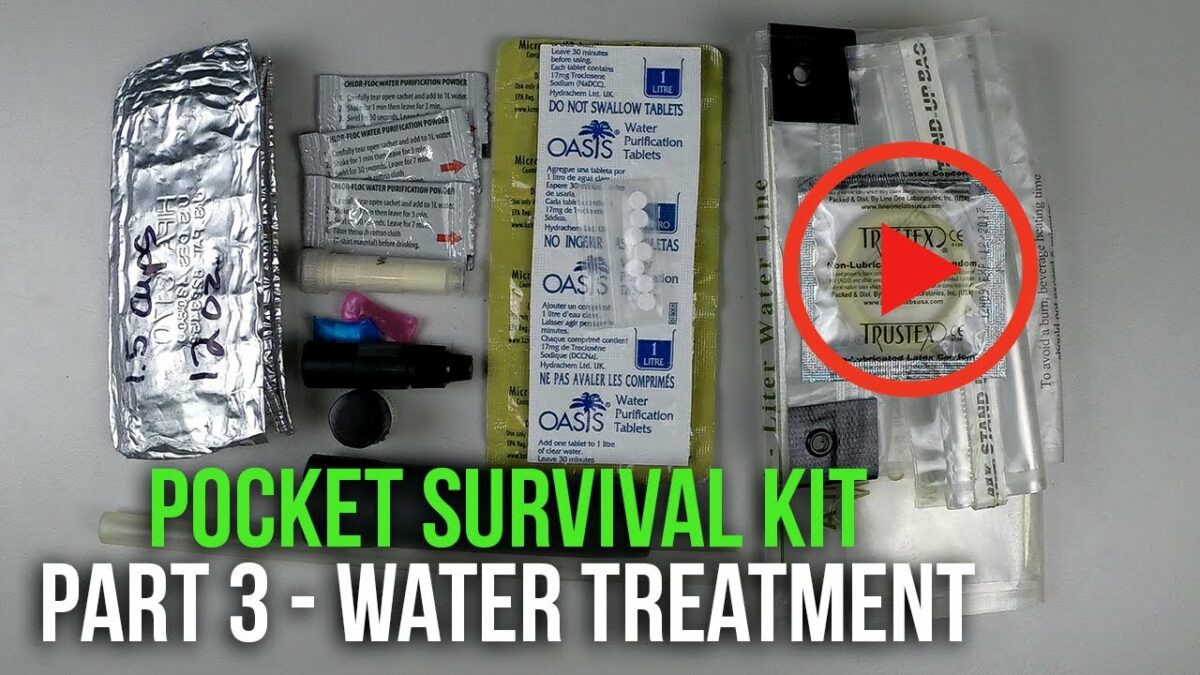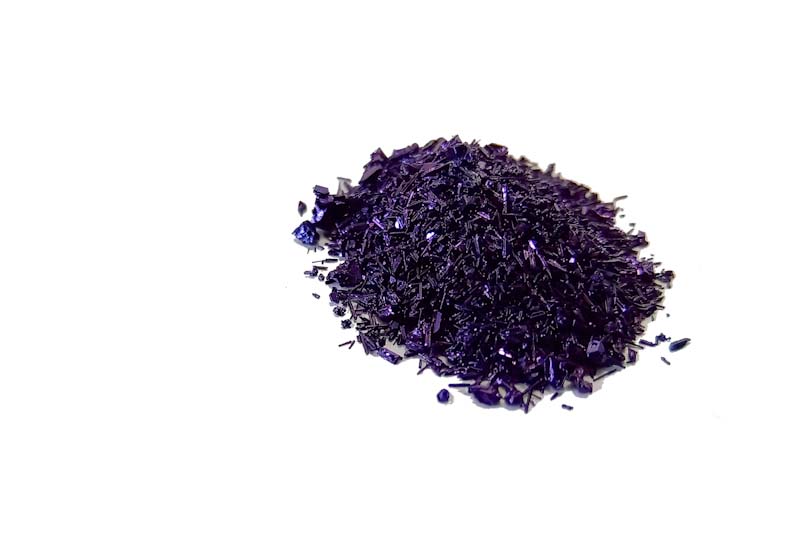First off, filtration is far from the only way to make pathologically (“relative to pathogens” pathologically, not the other definition) suspect water safe to drink. It can also be boiled, pasteurized, treated with water treatment chemicals, exposed to ultraviolet light, or distilled. Provided that the only reason your water is dangerous to drink is that it contains pathogens, any of the above methods should help.
If you need to treat water in an emergency, the go-to method is boiling. Harmful pathogens will be inactivated when your water heats its boiling point (100˚ C or 212˚ F at sea level). As long as you’re not breathing oxygen from a bottle (provided you’re not a Sherpa), you won’t have to worry about the boiling point of water decreasing with altitude because harmful pathogens an inactivated below 170˚ F and water boils at 183.9˚ F (78.77˚ C) at 20,000′ (6096m). And, if you are breathing oxygen from a bottle, you shouldn’t be boiling water on an open flame (because it’s flammable), and you probably have more immediate problems than dehydration … like not freezing to death.
Boiling water is the most idiot-proof water treatment method and, unsurprisingly, is favored by the CDC (because, unless your last name is Fauci, you’re an idiot in their eyes.) So, why do the other methods (like filtration) if boiling is so great?
For most of us, if we’re filtering tap water or drinking untreated surface water, either some catastrophe has contaminated the municipal water supply, or we are far from a source of treated drinking water. As such, we may not have electricity, natural gas, or whatever other energy source we would typically use to heat water, and if we do, it may be in short supply. Under either of these circumstances, it may be neither safe nor convenient to boil water.
Filter Technologies
Today’s four main filter technologies are microtubule-based, ceramic, electropositive, and carbon. One of the two former can be used in combination with one, or both, of the two later.
Ceramic filter elements work by passing water through a ceramic element that contains tiny pores. The holes are too small for protozoa and bacteria to pass but allow water to pass, trapping protozoa, oocysts, and bacteria in the ceramic matrix. It also traps particles of biomatter and other pollutants larger than the pore size. All this gunk clogs the element, but it can be cleaned by flushing and brushing to remove some of it to restore performance.
Microtubule-based hollow fiber filter elements work somewhat like ceramic elements, only they use microtubules (hollow fibers) instead of a porous ceramic matrix. Some models can be cleaned by backflushing them with a syringe, but the syringe takes up as much space as the filter.
The performance of both types of elements is further enhanced by using a prefilter to catch the big stuff before it goes to the element.
Very tiny particles and pathogens, like viruses, are too small for filter elements to remove. They are so small that they can pass right through them. Electropositive filters tackle the problem by using surface charge to attract and trap the tiny little guys. Therefore, filters designed to remove viruses can send them through a matrix impregnated with an electropositive gel or cream to pull out viruses after it has passed through a ceramic or microtubule element.
Carbon filters use the unique properties of activated carbon to remove some chemicals and impurities from drinking water and improve the taste. Activated carbon has an excellent surface area and small pores, which can be increased through high-tech methods like chemical processes or lower-tech ones like blowing air on it through a straw. These properties enable activated carbon to adsorb chemicals, impurities like biomatter, and pathogens. Most activated carbon in water filters comes from coconut husks.
The Downsides of Filtration
So, besides being idiot-proof, why is boiling better than filtration?
With most filter technologies, especially those cleaned or flushed, there is no way to know when the filter has become “compromised,” and pathogens start making past the filter element … other than giardiasis or cryptosporidiosis. I suppose you could use the symptoms of simultaneous vomiting and diarrhea as a cue to change your filter element.
As the filter wears, cracks form in microtubule-based elements, and the mating surfaces and ceramic is brushed away in ceramic ones. Microscopic damage can enable pathogens to get through the filter and into your drinking water.
Wet filter elements can also be damaged by freezing temperatures. As the water in microtubules and the pores of ceramic pieces freezes, ice crystals expand, cracking microtubules and ceramic elements. In that case, your filter element must stay warm, even if that means storing it inside your jacket and then in your sleeping bag with you at night, where your body heat can keep it from freezing. This makes filters somewhat less convenient in freezing weather.
Due to these downsides, the CDC recommends combining filtration with chemical treatment (the first filter, then treat) or boiling (the first filter, then boil). On a practical level, filtering water, even with an imperfect or broken filter, will reduce the pathogenic load in drinking water. Any reduction in pathogens can only help.
Does Any Filter Get Around These Downsides?
Yes. At least one does, I am aware of, and their method is simple. Aqua Mira designs their filter cartridges to clog up when they have reached the end of their useful life and then be replaced instead of cleaning them.
When the cartridge clogs, you replace it, thus avoiding the problems associated with wear and cleaning. This is smart because you also replace the activated carbon simultaneously and the electropositive matrix on their filters that incorporate one.
Beware False Marketing Claims
Some water filter manufacturers have made fantastic false claims about filters. If a company tells you that a filter the size of a pair of c-cell batteries stacked end to end can filter 100,000 gallons or even a million gallons or more, I have some land for sale in Florida that you might be interested in.
If you have been backpacking and filtered water, you know that no matter many flocculants you pour into it, how long you let the water settle, and how carefully you decant the clearer water off the top, water from streams, rivers, lakes, and springs have matter suspended in it, and that matter clogs filters.
You can scrub, you can flush, and you can prefilter, but your filter WILL clog with gunk and wear out long before 100K gallons. Period. They might as well put a trillion gallons. How long would it take to test that? A whole lot longer than the filter had existed before it went to market, I’ll tell you that much.
Do you know how many gallons of water I filter during a backpacking trip? Not very many. At most, 1-2 gallons per day. On a week-long trip, that’s 7-14 gallons on the extreme high end. I don’t filter a lot of water, yet I have worn out many filters and more cartridges.
So, how do you not fall prey to unscrupulous filter salespeople? First, look for a reasonable claim. Aqua Mira claims a capacity of between 20 and 120 gallons of untreated surface water for most small personal filter cartridges. They are tested far beyond this, but a reasonable claim is a good sign. If a company has a near unlimited capacity for any of their small portable filter products, that’s a bad sign.
Next, consider the technology. What do you need to filter where you’re going? In the US, that’s oocysts, protozoa, and bacteria at present.
Abroad, you may need a virus cartridge. If a filter has a ridiculously high capacity claim, it probably doesn’t include an activated carbon filter element. If it did, the activated carbon element wouldn’t be any good after a couple of hundred gallons because it can only adsorb material until the pores clog. Once that happens, it can no longer improve water quality.
Has the product been tested? Did an accredited independent water lab test it? Did they test it in-house or send it to a department at a university for testing? Suppose the company is based in North America. In that case, its filters should be tested by a third-party product certification agency accredited by ANSI like IAPMO R&T and certified to the US EPA Microbiological Purifier test standard to reduce cysts, bacteria, and viruses. Otherwise, you’re taking their word for it.
If a manufacturer points to studies, take the time to download them and read them. You might decide that your filter passing water with dangerous levels of E. coli contamination is fine with your filter manufacturer but not OK with you. Just because your buddy uses it and “didn’t get sick” doesn’t mean it works.
My grandfather pulled out into the main channel on Lake Powell and threw a bucket over the side of the boat for his drinking water, and he didn’t get sick. It doesn’t mean the water was pathogen-free, just that the older man had an iron-clad immune system from drinking lake water.
Do’s and Don’ts
- Where possible, DO boil water.
- DON’T buy pocket filters rated for 100,000 gallons or more.
- DON’T buy filters that are not certified by an accredited third-party product certification agency.
- DO use a prefilter
- DON’T let a wet water filter freeze at night. – Even microscopic ice crystals can compromise water filters. If allowed to freeze, replace it.
- DO Flush new filters that incorporate an activated carbon element with a few ounces of tap water before the first use – Blackwater will come out. This is just excess carbon and is normal.
- DO allow filters to dry and store them dry between uses.








BRENDA | February 6, 2022
|
I use a Zero water filter in my house. It has a 5 layered filter. Have you heard of it and is it agood one if the SHTF?
Dustin Hollis | March 7, 2022
|
Whole house water filters are designed to filter out minerals or basic contaminants. Not filter pathogens. Also keep in mind that your city water will likely not function after an extended statewide power outage. If you have a well, make sure you have a backup power source that can run it (solar, manual pump, or generator).
A good filter for home use is a Berkey style, using gravity to filter thru ceramic filters. You can make you own using the ceramic filters and some buckets. Look up DIY Berkey.
Danny | March 8, 2022
|
A well-written article with a lot of good information.
However, oxygen is not flammable! It will certainly increase the intensity of a fire, but oxygen will not, by itself burn. Ask any welder who uses an oxygen/acetylene torch. Google it. ‘Is oxygen, by itself flammable?’
cliff thrive | July 23, 2022
|
One of the best articles on water treatment I have ever seen concerning survival water treatment.. Impressive..
NEVER underestimate the risk of contaminated water. You “Will””be reduced to a whimpering baby if it is. You at a minimum will suffer from weakness at a time when you need every bit of energy and strength you have to get through what is happening.
Also be aware that chlorine, if used in excess amounts can kill off the good bacteria in your gut, Hence, stay in the usage amounts of the amount of chlorine to water ratio recommended. To much can cause digestive problems.
Sometime, just for the thrill of it, take a sample of a streams water back home and look at a drop of it it through a microscope at a doctors office or hospital, if they have the time,. Keep in mind that all you see is not bad, . But I think you will boil, or buy the best damn filtering equipment you can get !
And finally, keep in mind that boiling, or filters, unless they contain activated carbon,, will not remove chemical contamination.. Like lead, and waste water from old mining claims. with cyanide and mercury used back when for ore processing.,
Water is a very interesting subject, and in pure form, it will dissolve “anything”. Including rocks, given time. On the other hand, because of this property, you should not drink distilled water. as over time It can remove minerals from your body you need to function properly.
Therefore treat water used for drinking, washing, and bathing, with respect and common sense. Both of which at times seem to be in short supply nowadays..